Yuejiang Liu
Learning Long-Context Diffusion Policies via Past-Token Prediction
May 14, 2025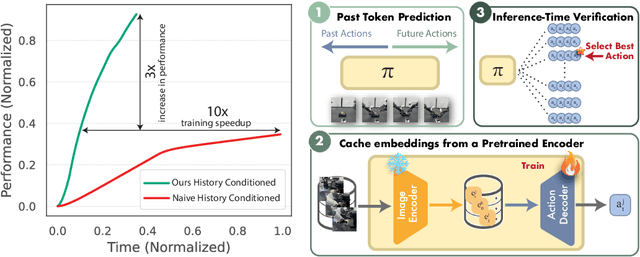



Abstract:Reasoning over long sequences of observations and actions is essential for many robotic tasks. Yet, learning effective long-context policies from demonstrations remains challenging. As context length increases, training becomes increasingly expensive due to rising memory demands, and policy performance often degrades as a result of spurious correlations. Recent methods typically sidestep these issues by truncating context length, discarding historical information that may be critical for subsequent decisions. In this paper, we propose an alternative approach that explicitly regularizes the retention of past information. We first revisit the copycat problem in imitation learning and identify an opposite challenge in recent diffusion policies: rather than over-relying on prior actions, they often fail to capture essential dependencies between past and future actions. To address this, we introduce Past-Token Prediction (PTP), an auxiliary task in which the policy learns to predict past action tokens alongside future ones. This regularization significantly improves temporal modeling in the policy head, with minimal reliance on visual representations. Building on this observation, we further introduce a multistage training strategy: pre-train the visual encoder with short contexts, and fine-tune the policy head using cached long-context embeddings. This strategy preserves the benefits of PTP while greatly reducing memory and computational overhead. Finally, we extend PTP into a self-verification mechanism at test time, enabling the policy to score and select candidates consistent with past actions during inference. Experiments across four real-world and six simulated tasks demonstrate that our proposed method improves the performance of long-context diffusion policies by 3x and accelerates policy training by more than 10x.
Curating Demonstrations using Online Experience
Mar 05, 2025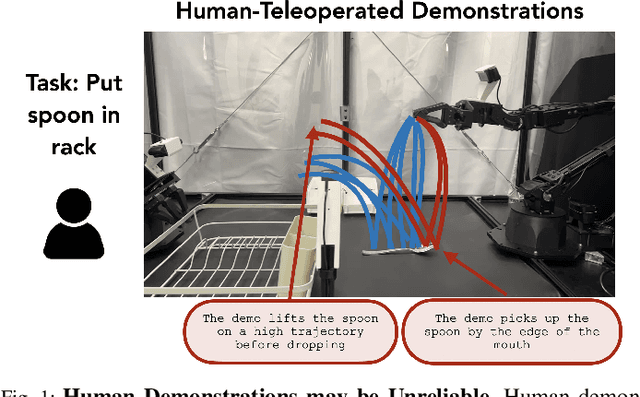



Abstract:Many robot demonstration datasets contain heterogeneous demonstrations of varying quality. This heterogeneity may benefit policy pre-training, but can hinder robot performance when used with a final imitation learning objective. In particular, some strategies in the data may be less reliable than others or may be underrepresented in the data, leading to poor performance when such strategies are sampled at test time. Moreover, such unreliable or underrepresented strategies can be difficult even for people to discern, and sifting through demonstration datasets is time-consuming and costly. On the other hand, policy performance when trained on such demonstrations can reflect the reliability of different strategies. We thus propose for robots to self-curate based on online robot experience (Demo-SCORE). More specifically, we train and cross-validate a classifier to discern successful policy roll-outs from unsuccessful ones and use the classifier to filter heterogeneous demonstration datasets. Our experiments in simulation and the real world show that Demo-SCORE can effectively identify suboptimal demonstrations without manual curation. Notably, Demo-SCORE achieves over 15-35% higher absolute success rate in the resulting policy compared to the base policy trained with all original demonstrations.
TAROT: Targeted Data Selection via Optimal Transport
Nov 30, 2024



Abstract:We propose TAROT, a targeted data selection framework grounded in optimal transport theory. Previous targeted data selection methods primarily rely on influence-based greedy heuristics to enhance domain-specific performance. While effective on limited, unimodal data (i.e., data following a single pattern), these methods struggle as target data complexity increases. Specifically, in multimodal distributions, these heuristics fail to account for multiple inherent patterns, leading to suboptimal data selection. This work identifies two primary factors contributing to this limitation: (i) the disproportionate impact of dominant feature components in high-dimensional influence estimation, and (ii) the restrictive linear additive assumptions inherent in greedy selection strategies. To address these challenges, TAROT incorporates whitened feature distance to mitigate dominant feature bias, providing a more reliable measure of data influence. Building on this, TAROT uses whitened feature distance to quantify and minimize the optimal transport distance between the selected data and target domains. Notably, this minimization also facilitates the estimation of optimal selection ratios. We evaluate TAROT across multiple tasks, including semantic segmentation, motion prediction, and instruction tuning. Results consistently show that TAROT outperforms state-of-the-art methods, highlighting its versatility across various deep learning tasks. Code is available at https://github.com/vita-epfl/TAROT.
Bidirectional Decoding: Improving Action Chunking via Closed-Loop Resampling
Aug 30, 2024
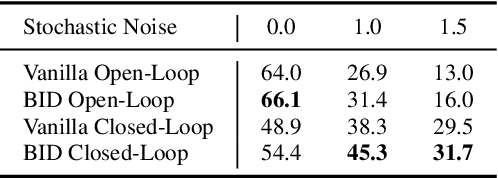


Abstract:Predicting and executing a sequence of actions without intermediate replanning, known as action chunking, is increasingly used in robot learning from human demonstrations. However, its effects on learned policies remain puzzling: some studies highlight its importance for achieving strong performance, while others observe detrimental effects. In this paper, we first dissect the role of action chunking by analyzing the divergence between the learner and the demonstrator. We find that longer action chunks enable a policy to better capture temporal dependencies by taking into account more past states and actions within the chunk. However, this advantage comes at the cost of exacerbating errors in stochastic environments due to fewer observations of recent states. To address this, we propose Bidirectional Decoding (BID), a test-time inference algorithm that bridges action chunking with closed-loop operations. BID samples multiple predictions at each time step and searches for the optimal one based on two criteria: (i) backward coherence, which favors samples aligned with previous decisions, (ii) forward contrast, which favors samples close to outputs of a stronger policy and distant from those of a weaker policy. By coupling decisions within and across action chunks, BID enhances temporal consistency over extended sequences while enabling adaptive replanning in stochastic environments. Experimental results show that BID substantially outperforms conventional closed-loop operations of two state-of-the-art generative policies across seven simulation benchmarks and two real-world tasks.
Forecast-PEFT: Parameter-Efficient Fine-Tuning for Pre-trained Motion Forecasting Models
Jul 28, 2024


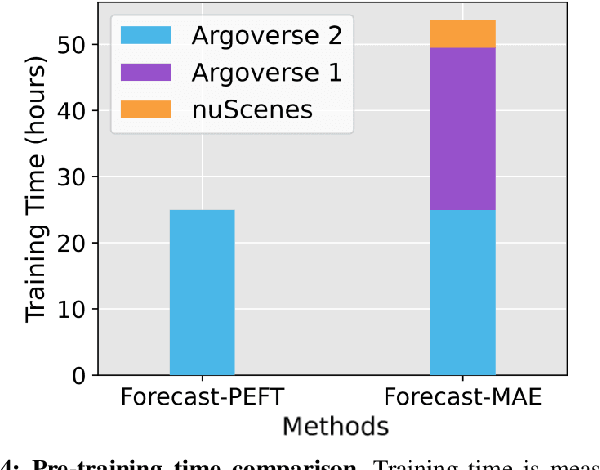
Abstract:Recent progress in motion forecasting has been substantially driven by self-supervised pre-training. However, adapting pre-trained models for specific downstream tasks, especially motion prediction, through extensive fine-tuning is often inefficient. This inefficiency arises because motion prediction closely aligns with the masked pre-training tasks, and traditional full fine-tuning methods fail to fully leverage this alignment. To address this, we introduce Forecast-PEFT, a fine-tuning strategy that freezes the majority of the model's parameters, focusing adjustments on newly introduced prompts and adapters. This approach not only preserves the pre-learned representations but also significantly reduces the number of parameters that need retraining, thereby enhancing efficiency. This tailored strategy, supplemented by our method's capability to efficiently adapt to different datasets, enhances model efficiency and ensures robust performance across datasets without the need for extensive retraining. Our experiments show that Forecast-PEFT outperforms traditional full fine-tuning methods in motion prediction tasks, achieving higher accuracy with only 17% of the trainable parameters typically required. Moreover, our comprehensive adaptation, Forecast-FT, further improves prediction performance, evidencing up to a 9.6% enhancement over conventional baseline methods. Code will be available at https://github.com/csjfwang/Forecast-PEFT.
Co-Supervised Learning: Improving Weak-to-Strong Generalization with Hierarchical Mixture of Experts
Feb 23, 2024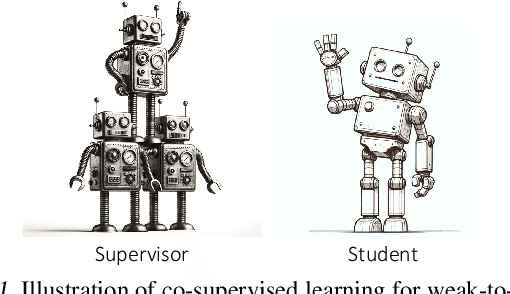
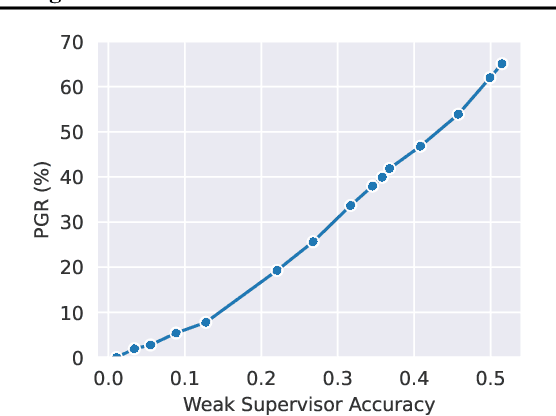
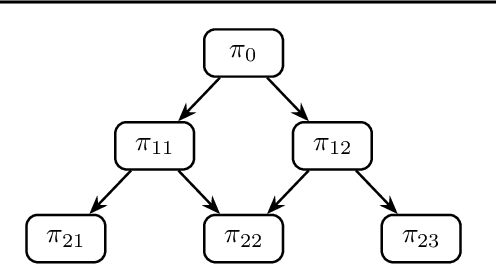
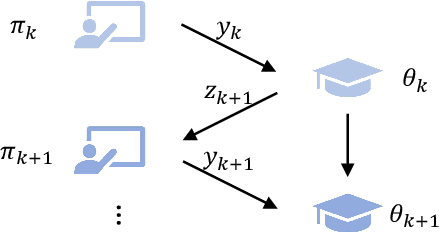
Abstract:Steering the behavior of a strong model pre-trained on internet-scale data can be difficult due to the scarcity of competent supervisors. Recent studies reveal that, despite supervisory noises, a strong student model may surpass its weak teacher when fine-tuned on specific objectives. Yet, the effectiveness of such weak-to-strong generalization remains limited, especially in the presence of large capability gaps. In this paper, we propose to address this challenge by harnessing a diverse set of specialized teachers, instead of a single generalist one, that collectively supervises the strong student. Our approach resembles the classical hierarchical mixture of experts, with two components tailored for co-supervision: (i) we progressively alternate student training and teacher assignment, leveraging the growth of the strong student to identify plausible supervisions; (ii) we conservatively enforce teacher-student and local-global consistency, leveraging their dependencies to reject potential annotation noises. We validate the proposed method through visual recognition tasks on the OpenAI weak-to-strong benchmark and additional multi-domain datasets. Our code is available at \url{https://github.com/yuejiangliu/csl}.
Sim-to-Real Causal Transfer: A Metric Learning Approach to Causally-Aware Interaction Representations
Dec 07, 2023Abstract:Modeling spatial-temporal interactions among neighboring agents is at the heart of multi-agent problems such as motion forecasting and crowd navigation. Despite notable progress, it remains unclear to which extent modern representations can capture the causal relationships behind agent interactions. In this work, we take an in-depth look at the causal awareness of these representations, from computational formalism to real-world practice. First, we cast doubt on the notion of non-causal robustness studied in the recent CausalAgents benchmark. We show that recent representations are already partially resilient to perturbations of non-causal agents, and yet modeling indirect causal effects involving mediator agents remains challenging. To address this challenge, we introduce a metric learning approach that regularizes latent representations with causal annotations. Our controlled experiments show that this approach not only leads to higher degrees of causal awareness but also yields stronger out-of-distribution robustness. To further operationalize it in practice, we propose a sim-to-real causal transfer method via cross-domain multi-task learning. Experiments on pedestrian datasets show that our method can substantially boost generalization, even in the absence of real-world causal annotations. We hope our work provides a new perspective on the challenges and potential pathways towards causally-aware representations of multi-agent interactions. Our code is available at https://github.com/socialcausality.
On Pitfalls of Test-Time Adaptation
Jun 06, 2023


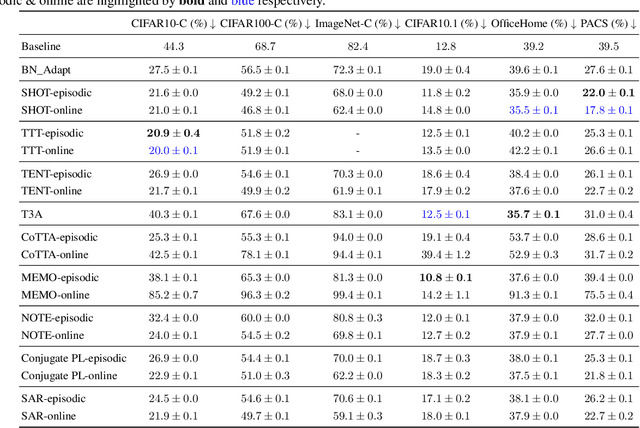
Abstract:Test-Time Adaptation (TTA) has recently emerged as a promising approach for tackling the robustness challenge under distribution shifts. However, the lack of consistent settings and systematic studies in prior literature hinders thorough assessments of existing methods. To address this issue, we present TTAB, a test-time adaptation benchmark that encompasses ten state-of-the-art algorithms, a diverse array of distribution shifts, and two evaluation protocols. Through extensive experiments, our benchmark reveals three common pitfalls in prior efforts. First, selecting appropriate hyper-parameters, especially for model selection, is exceedingly difficult due to online batch dependency. Second, the effectiveness of TTA varies greatly depending on the quality and properties of the model being adapted. Third, even under optimal algorithmic conditions, none of the existing methods are capable of addressing all common types of distribution shifts. Our findings underscore the need for future research in the field to conduct rigorous evaluations on a broader set of models and shifts, and to re-examine the assumptions behind the empirical success of TTA. Our code is available at \url{https://github.com/lins-lab/ttab}.
Causal Triplet: An Open Challenge for Intervention-centric Causal Representation Learning
Jan 12, 2023



Abstract:Recent years have seen a surge of interest in learning high-level causal representations from low-level image pairs under interventions. Yet, existing efforts are largely limited to simple synthetic settings that are far away from real-world problems. In this paper, we present Causal Triplet, a causal representation learning benchmark featuring not only visually more complex scenes, but also two crucial desiderata commonly overlooked in previous works: (i) an actionable counterfactual setting, where only certain object-level variables allow for counterfactual observations whereas others do not; (ii) an interventional downstream task with an emphasis on out-of-distribution robustness from the independent causal mechanisms principle. Through extensive experiments, we find that models built with the knowledge of disentangled or object-centric representations significantly outperform their distributed counterparts. However, recent causal representation learning methods still struggle to identify such latent structures, indicating substantial challenges and opportunities for future work. Our code and datasets will be available at https://sites.google.com/view/causaltriplet.
Motion Style Transfer: Modular Low-Rank Adaptation for Deep Motion Forecasting
Nov 06, 2022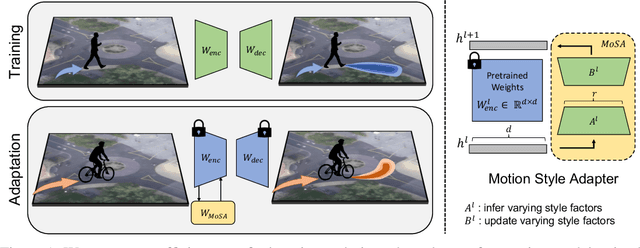

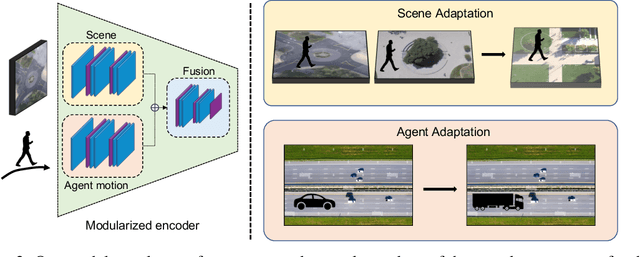

Abstract:Deep motion forecasting models have achieved great success when trained on a massive amount of data. Yet, they often perform poorly when training data is limited. To address this challenge, we propose a transfer learning approach for efficiently adapting pre-trained forecasting models to new domains, such as unseen agent types and scene contexts. Unlike the conventional fine-tuning approach that updates the whole encoder, our main idea is to reduce the amount of tunable parameters that can precisely account for the target domain-specific motion style. To this end, we introduce two components that exploit our prior knowledge of motion style shifts: (i) a low-rank motion style adapter that projects and adjusts the style features at a low-dimensional bottleneck; and (ii) a modular adapter strategy that disentangles the features of scene context and motion history to facilitate a fine-grained choice of adaptation layers. Through extensive experimentation, we show that our proposed adapter design, coined MoSA, outperforms prior methods on several forecasting benchmarks.
 Add to Chrome
Add to Chrome Add to Firefox
Add to Firefox Add to Edge
Add to Edge